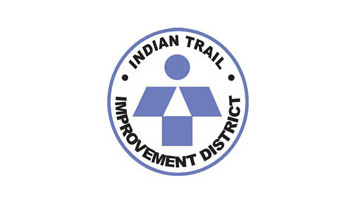The Indian Trail Improvement District Board of Supervisors passed a resolution Wednesday, Dec. 16 approving a mobility plan that it has been working over the past year and a half.
Kim DeLaney with the Treasure Coast Regional Planning Council said the “complete streets” mobility plan will determine design expectations, identify partners and recommend improvements for ITID over a 20-year timeframe and beyond.
The plan is intended to control cut-through speeding, reduce county impacts on ITID residents, add more traffic calming, improve safety for bicyclists and pedestrians, keep the rural look, expand the equestrian trail network, explore canal bank pathways, promote bioswales as buffers, and consider golf carts and other uses.
“There is a menu of different types of improvements identified in the plan,” DeLaney said, including types of sidewalks, intersection treatments, equestrian facilities and bioswale plant types.
The plan identifies existing ITID traffic calming measures and sets forth near-term, mid-term and long-term packages and phases of improvements.
“This is anticipated to be a 15- to 20-year buildout of physical improvements within the roadway network, intersection improvements, and traffic calming like speed tables, splitter islands and improvements near schools to improve safe passage for students,” she said.
The plan includes specific components of street network improvements.
“In the interest of budgeting, a selection of improvements were identified for the major roadways in the district,” DeLaney said.
The plan suggests 72 miles of sidewalks on ITID’s 85-mile road network and a 41-mile equestrian trail network over the same timeframe.
“The equestrian trail network… is a combination of paved roads, unpaved roads as well as canal banks with crossings to allow us to get north, south, east and west without running into conflict,” DeLaney said.
It also has a detailed cost estimate for each phase.
“The first phase is going to be about $8.5 million,” she said. “We would expect more than half of that cost to be picked up with grant dollars as the district navigates through the grant opportunities, particularly from the Transportation Planning Agency.”
The plan goes longer than the 20-year time frame, suggesting a complete mobility plan at buildout.
“With this plan, we are already in line for applications to be submitted in the next cycle for the TPA, so it’s a great way to bring your own tax dollars home in transportation projects,” DeLaney said.
Supervisor Jennifer Hager made a motion to approve the resolution, which carried 5-0.








